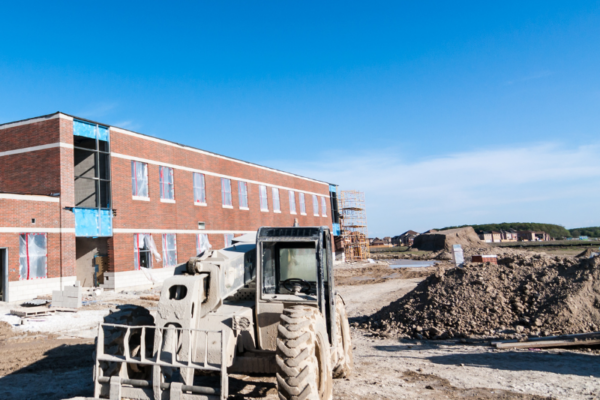Economists have long argued about the effect of capital spending on student achievement. Some studies have shown positive results; others not. Yale economist Barbara Biasi suspected the outcomes varied widely because each study occurred within a different local context. Biasi and colleagues Julien LaFortune of the Public Policy Institute of California and David Schönholzer of Stockholm University examined bond votes for capital projects involving billions of dollars in 17,000 communities across the United States to quantify the effects of school bond issues on student test scores and home prices. FutureEd Policy Director Liz Cohen spoke with Biasi about her research on the connection between school capital investment and academic outcomes.
What did your research reveal?
We released a working paper in July 2023 showing that, on average, authorizing new school bonds raises both student test scores and local home prices. But the effects depend on how the money is spent. Projects that raise student test scores—like improving HVAC systems or replacing roofs—are not likely to raise home prices. New athletic facilities, however, do raise home prices, but don’t increase test scores.
Why did you focus on bonds?
Two reasons. First, there is a small, but I would say important, research literature that has tried to document whether investing in school facilities helps students. And that literature is very puzzling. There are some studies that find positive effects on students as a result of, for example, building new schools or renovating existing facilities, and studies that find nothing.
Also, there is still a debate on whether money matters in education and whether investing more in schools can help students. The thing that’s always struck me is that people talk about money and they never talk about what the money is going to be spent on, which is kind of important! Because bonds have to be passed in referenda, those referenda have to explain what the money has to be used on. And so you have this unique source of information on the actual use of the money, which you typically don’t get in other data sets.
One takeaway from your work is that school districts with larger populations or proportions of lower-income students and students of color seem to benefit more from voter approval of bond issues. You find that an increase in capital spending only helps in more disadvantaged districts. What do you think that means?
The first explanation is that those districts have facilities in poorer condition. It’s not just that the spending is low right now—it’s because spending has always been systematically low. So, whenever you make an investment, that investment ends up being really important.
The second explanation is that, if you look at the types of bonds that low-income districts pass, they tend to be in spending categories that actually increase test scores, more so than in wealthier districts. In contrast, wealthier districts are slightly more likely to spend money on athletic facilities compared to poorer districts.
When a bond passes and spending increases, does that affect whether different kinds of kids end up moving to that school district? Does it attract higher-income families, which might then influence test scores?
When you pass a bond, there may be a slight increase in the share of higher-income kids. But that alone cannot explain the increases in test scores that we observe. We find that even when the population doesn’t change, test scores go up. So it’s unlikely that the reshuffling of families across districts alone explains in the improvements in test scores.
What surprised you the most about your findings?
What people care about is not necessarily what students benefit from, with some exceptions. People don’t seem to value things like replacing a leaking roof, whereas people seem to value things like building a new stadium a lot. Maybe people are not aware that a school is getting rid of asbestos, or replacing the roof, or replacing the plumbing system, or installing HVAC systems, even though these sorts of infrastructure investments really stand out among the things that matter for student achievement.
What’s the most important take-away from the study?
When we are discussing whether money matters, we really should be thinking about how the money is spent, what’s being done with the money.
I would love to be able to quantify the amount of “waste” that happens in public schools. Maybe we’re not getting things built in the most effective or most efficient way. Or maybe there are ways to save money on certain things that are not particularly valuable and shift it towards things that really can help students. The literature so far has been silent on that, primarily due to data limitations. But with all the tools and techniques that now allow us to extract information from new places, and new datasets like the one we created for this project, we can make advancements in that direction.
But in general, the point is, how you spend your money matters.

